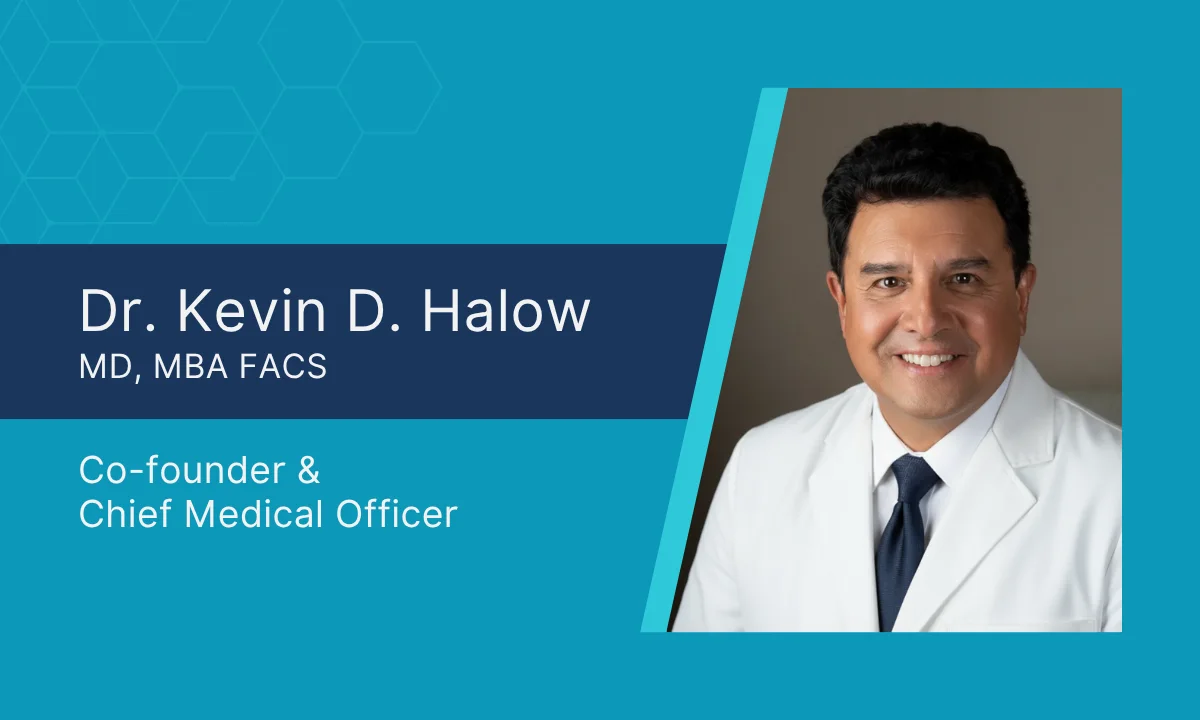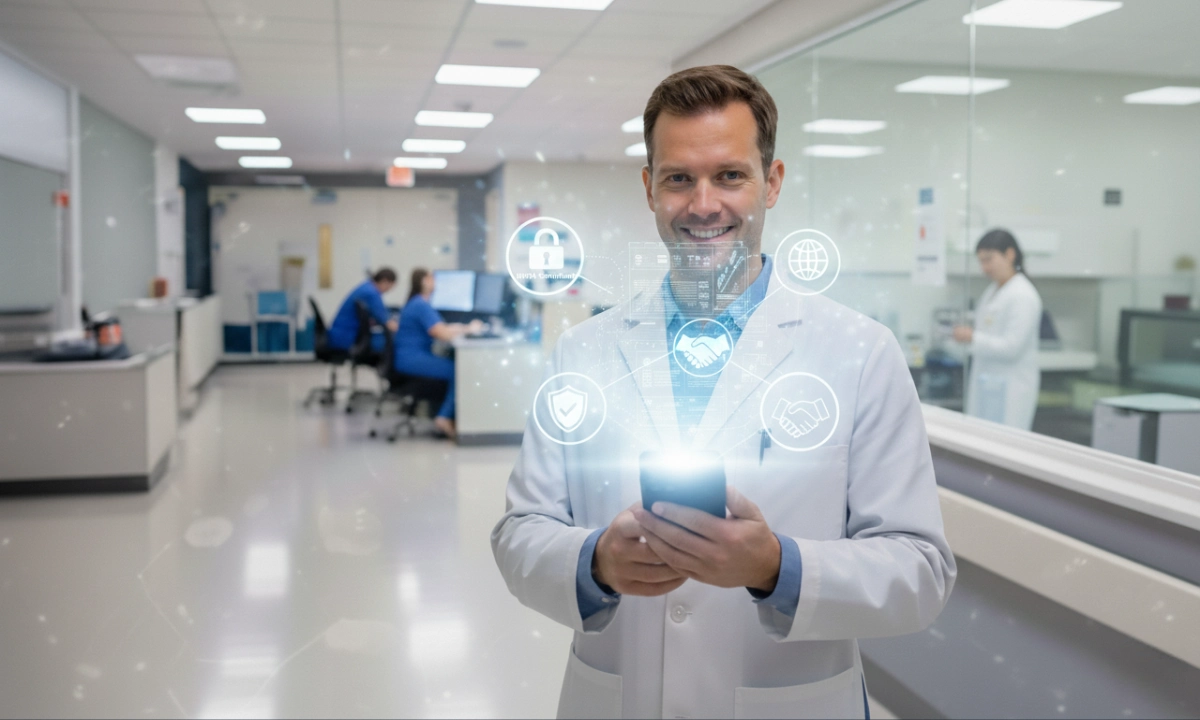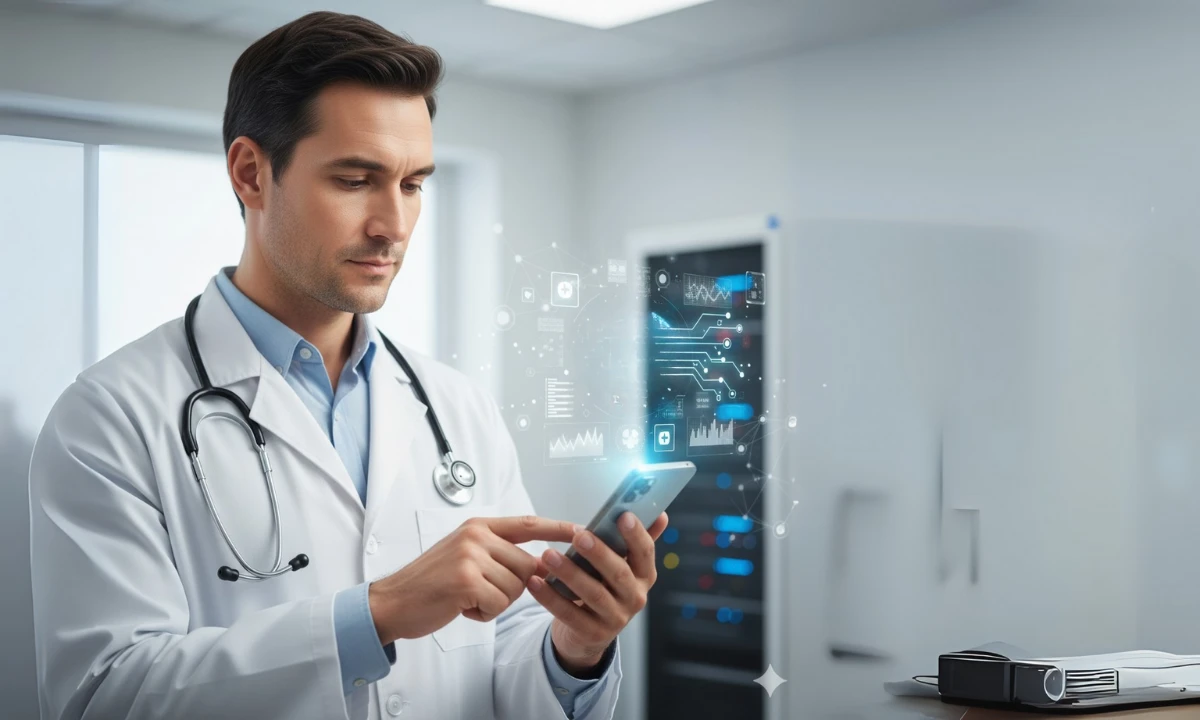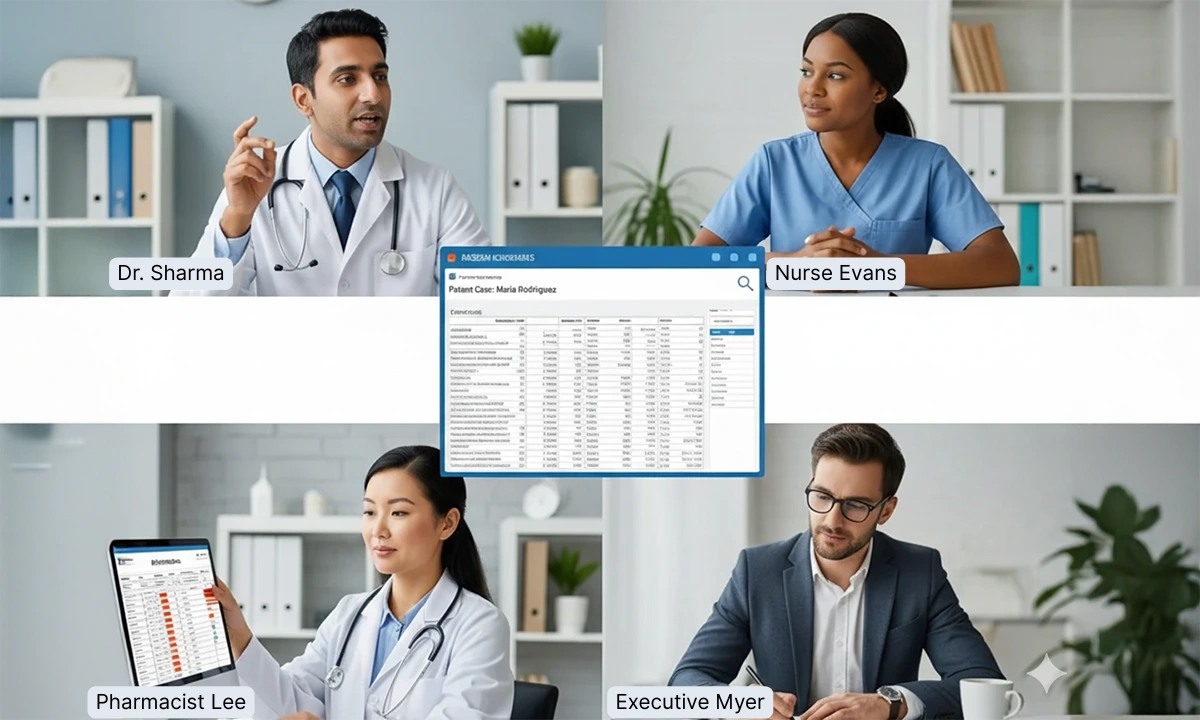Empowering Clinicians with Secure Mobile Tools
Streamlining Communication Through Device Consolidation
Implementing HIPAA compliant communication tools—such as clinical smartphones—has shown significant potential to reduce staff workload by simplifying communication pathways and improving patient care efficiency.
One major advantage is the consolidation of multiple devices into a single, versatile tool.
Reducing Cognitive Load and Enhancing Workflow
Clinicians no longer need to carry separate devices for team communication, external calls, alerts, and accessing patient data. A single secure smartphone app can replace:
- Basic phones
- Pagers
- Desktop Computer
This simplification reduces cognitive load, minimizes distractions, and allows clinicians to focus more effectively on patient care.
9 appropriate ways to communicate HIPAA for healthcare professionals
Accelerating Response Times for Critical Events
Modern clinical smartphones deliver real-time alerts for urgent medical situations—such as stroke responses or trauma activations. These alerts are instantly transmitted to the appropriate care team members, enabling faster mobilization and timely intervention. This capability enhances clinical workflow management and improves outcomes in time-sensitive scenarios.
Enhancing Team Coordination with Real-Time Visibility
Features like the Dynamic Care Team display enable clinicians to view a patient’s entire care team, including availability and contact details, which are updated in real-time.
This visibility supports:
- Faster care coordination
- Reduced delays in critical care
- Improved workflow efficiency and patient outcomes
Knowing who is available and how to reach them instantly is a game-changer in urgent care settings.
Minimizing Interruptions and Prioritizing Communication
Compared to pagers, HIPAA-compliant communication apps offer more control over message flow.
Clinicians can:
- Filter communications by urgency
- Prioritize patient interactions
- Reduce unnecessary interruptions
While mobile technology may increase message volume, its nuanced notification settings help create a more focused and less stressful work environment—ultimately benefiting both providers and patients.
HIPAA Compliant Instant Messaging
Key Considerations for Successful Mobile Technology Integration
Prioritizing Data Security and Patient Privacy
Successful mobile technology integration in healthcare begins with a strong emphasis on safeguarding sensitive patient information. HIPAA-compliant communication systems—such as secure texting apps—must adhere to strict security protocols. Healthcare organizations should implement robust measures including:
- End-to-end encryption
- Secure authentication processes
- Data loss prevention strategies
Secure messaging platforms must be used for all communications involving protected health information (PHI). These safeguards are essential not only for legal compliance but also for maintaining patient trust.
Establishing Clear Policies and Guidelines
To ensure responsible use of mobile devices, healthcare organizations must develop comprehensive policies that govern:
- Use of personal vs. hospital-issued devices
- Appropriate usage during work hours
- Data access and security protocols
These guidelines help balance the benefits of mobile technology with the need to minimize distractions and prevent misuse. Clear expectations promote professionalism and ethical behavior in clinical environments.
Ensuring Seamless EHR Integration
Mobile technology reaches its full potential when integrated with Electronic Health Records (EHRs). This interoperability enables:
- A unified flow of patient information
- Elimination of data silos
- More informed clinical decision-making
HIPAA-compliant communication tools should be integrated into a connected ecosystem. Isolated apps that don’t sync with central records can create inefficiencies and hinder care coordination.
Investing in Training and Support for a Medical Practice
Effective adoption of mobile communication tools requires comprehensive training for staff. Healthcare professionals must be educated on:
- Secure usage of apps and devices
- Key functionalities and security features
Ongoing technical support is crucial for addressing challenges and maintaining continued proficiency. Training empowers clinicians to use mobile technology with confidence, thereby enhancing both workflow efficiency and patient care.
Embracing the Future of Mobile Communication in Healthcare
HIPAA-compliant mobile systems are transforming healthcare by enhancing communication, boosting teamwork, and improving efficiency. These tools facilitate collaboration among medical professionals, resulting in improved patient outcomes and safer care environments.
Prioritizing Security and Responsible Implementation
To fully harness the potential of mobile technology, healthcare organizations must commit to the responsible deployment of this technology. This includes safeguarding patient data, enforcing clear device usage policies, integrating with existing IT systems, and offering comprehensive training and support for staff.
Building a Connected and Empowered Workforce
The vision of a connected healthcare workforce—where clinicians communicate seamlessly via secure mobile tools—is within reach. By adopting HIPAA-compliant messaging and mobile strategies, organizations can empower their teams and elevate the standard of patient care.
Clinical Communication & Collaboration (CC&C) Challenges in Healthcare Industry
Frequently Asked Questions
1. What is HIPAA compliant mobile communication in healthcare?
HIPAA compliant mobile communication refers to secure smartphone-based tools that protect patient data while enabling clinicians to communicate, coordinate care, and access critical information in real time.
2. How does HIPAA compliant mobile communication reduce device overload?
By consolidating pagers, basic phones, and desktop systems into a single secure app, HIPAA compliant mobile communication reduces the need for multiple devices, simplifying workflows and reducing distractions.
3. Can HIPAA compliant mobile communication improve response times in emergencies?
Yes. Real-time alerts from HIPAA compliant mobile communication apps allow critical notifications, like trauma activations to instantly reach the right care team members, accelerating interventions and improving patient outcomes.
4. Why is EHR integration important for HIPAA compliant mobile communication tools?
Seamless EHR integration ensures HIPAA compliant mobile communication platforms provide context-rich, up-to-date patient information without manual data entry, reducing errors and improving decision-making.
5. What security measures do HIPAA compliant mobile communication apps use?
They use end-to-end encryption, secure authentication, and strict access controls to safeguard PHI, ensuring compliance with HIPAA and maintaining patient trust.







